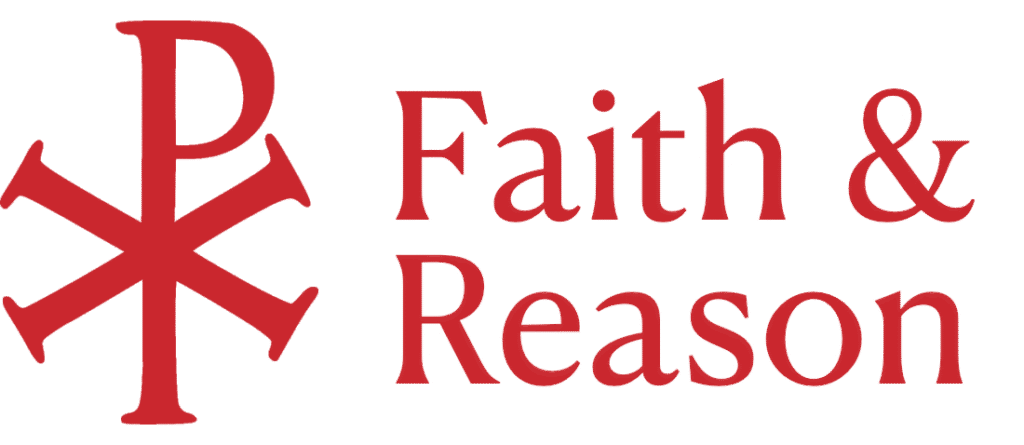
Teacher Portal

Investigation 1: Theological Slide Set
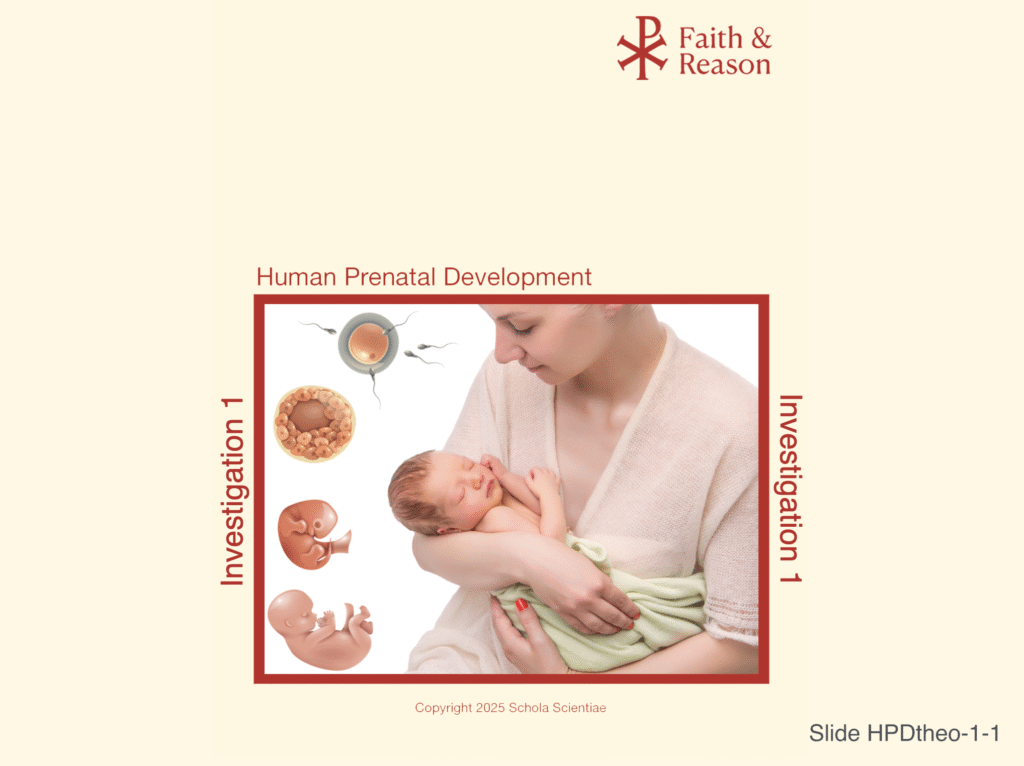
Welcome students to the theological side of the Human Prenatal Development CELL. This slide mirrors the science structure to provide familiarity. Reinforce that just as students explored the physical beginnings of human life in science, they’ll now reflect on the sacred meaning of that life.
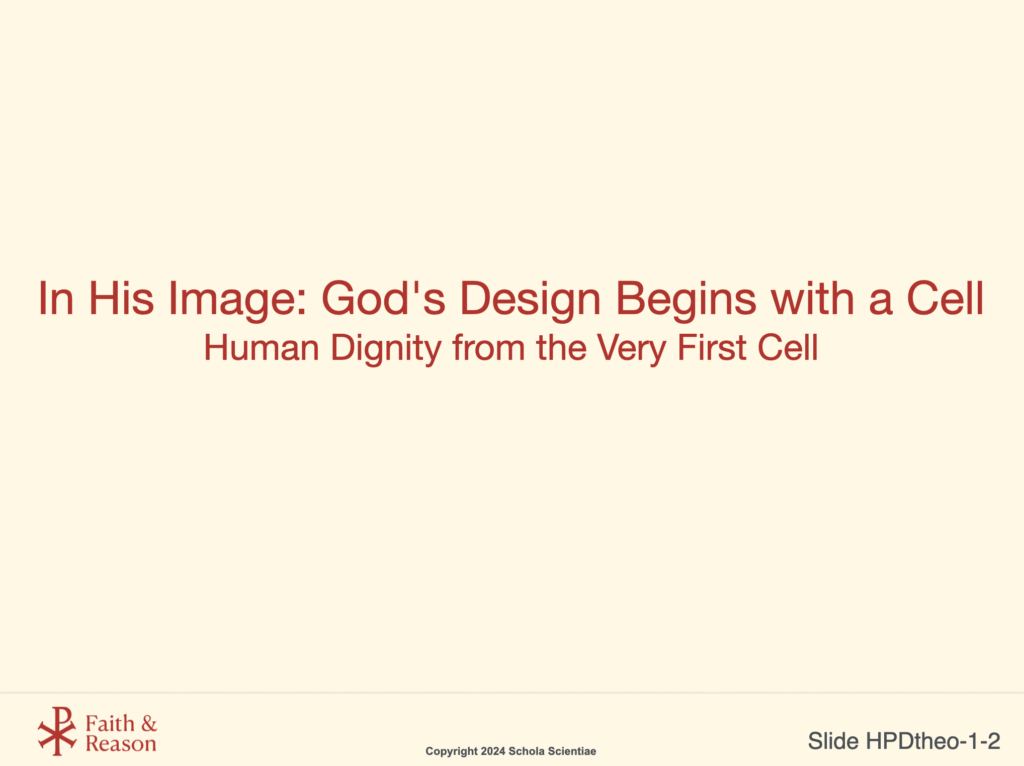
Introduce the title of the lesson. Emphasize the connection between God’s design and the beginning of life at the cellular level. Invite students to reflect on what it means for a human to be created in God’s image from the very first moment.
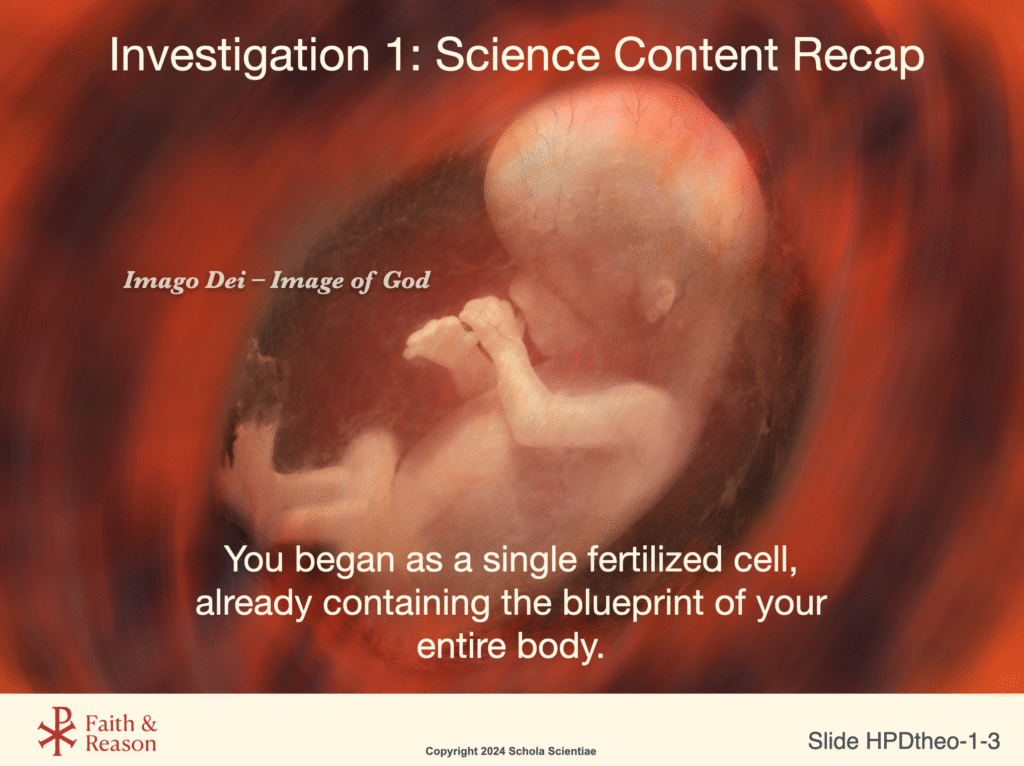
Use this slide to review what students learned in science. Highlight the phrase ‘Imago Dei – Image of God’ as the bridge from biology to theology. Ask: ‘What does it mean that our genetic code reflects more than biology—it reflects divine purpose?’
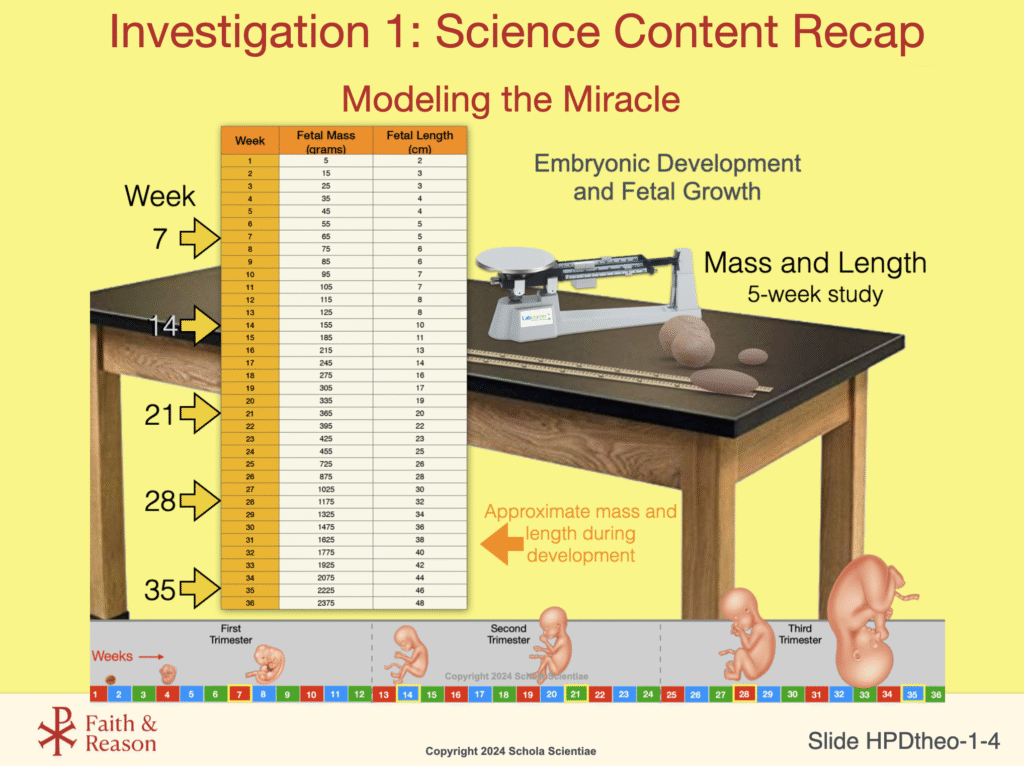
This slide shows a part of the lab for Investigation 1 in which the developmwnt of a human, from conception to birth, occurs. Point out how scientific measurement of fetal development reveals the miracle of life. Suggest that data (mass, length) is not just technical—it’s evidence of God’s unfolding plan. Invite wonder at the order and beauty of development.
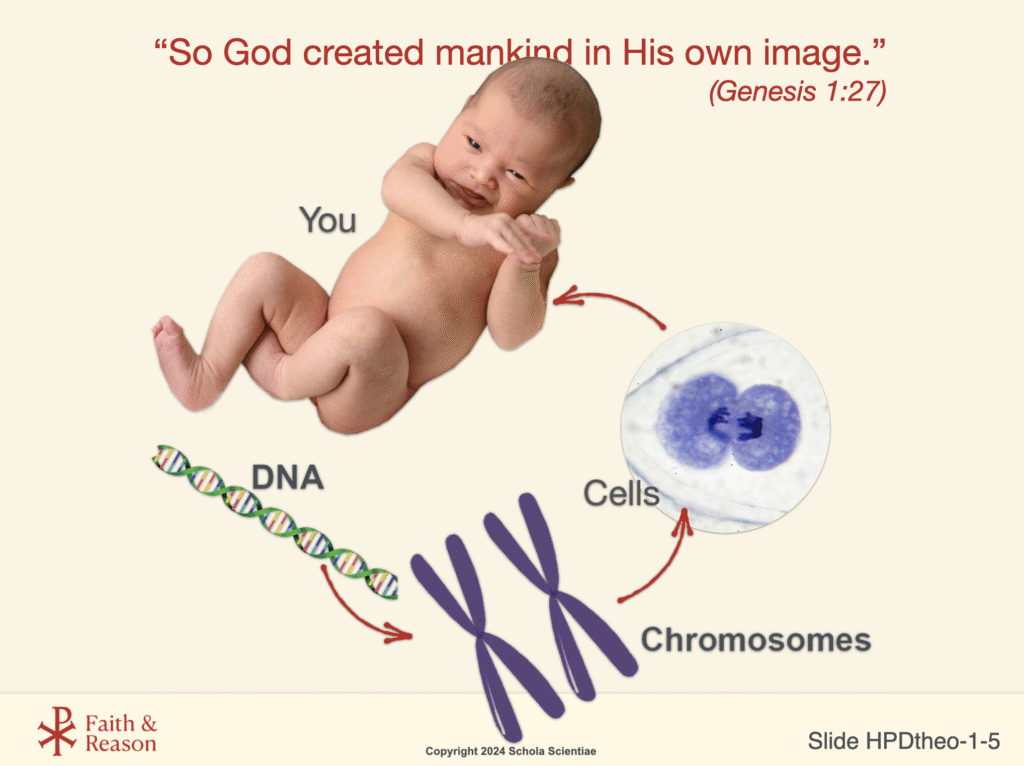
Read the verse aloud. Connect the image of the baby to the idea of being made in God’s image. Use the visual DNA-to-you sequence to stress: ‘Even in our cells, we carry God’s design.’ Ask students: ‘How is your body a reflection of God?’
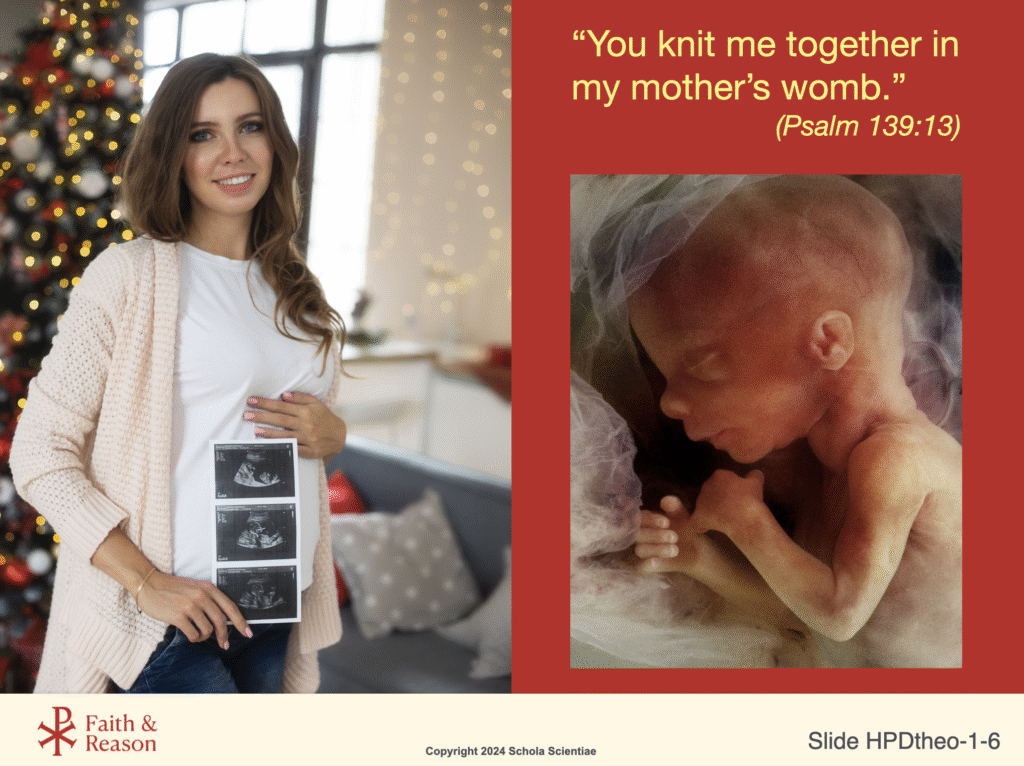
Invite students to reflect quietly or journal: ‘What does it feel like to know God formed you with such care?’ Use the image of the mother and ultrasound to reinforce the tenderness of divine creation.
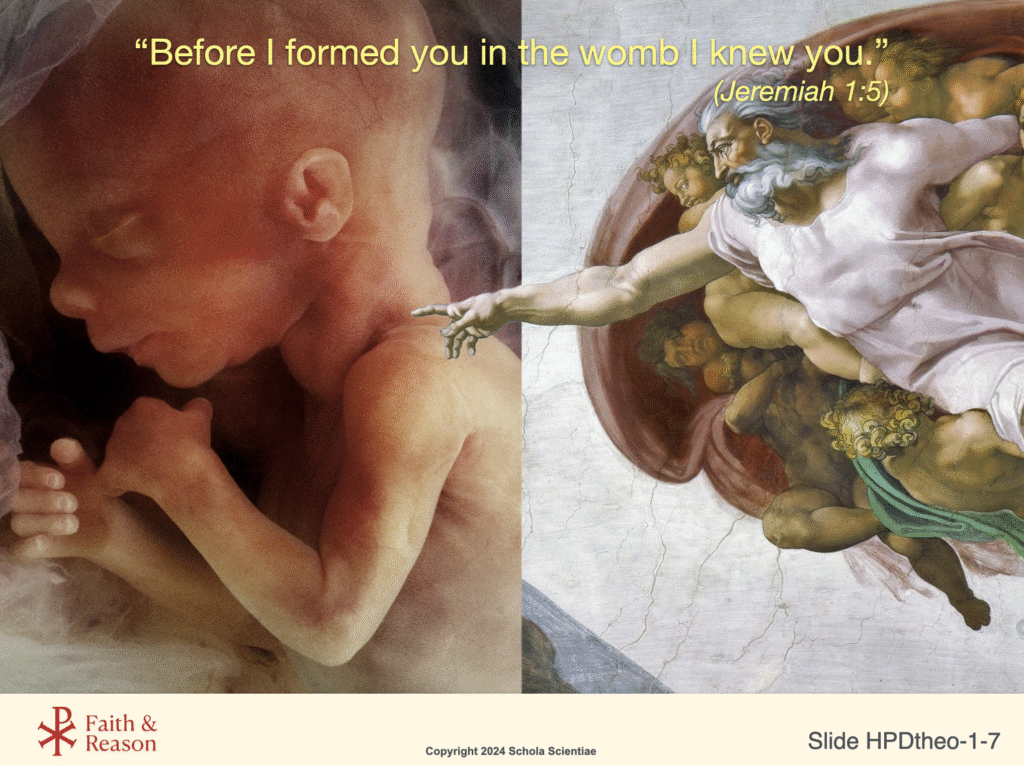
Emphasize God’s knowledge of each person before birth. Pair the Scripture with Michelangelo’s image to show God reaching out to humanity from the beginning. Ask: ‘What might God already know about your purpose?’
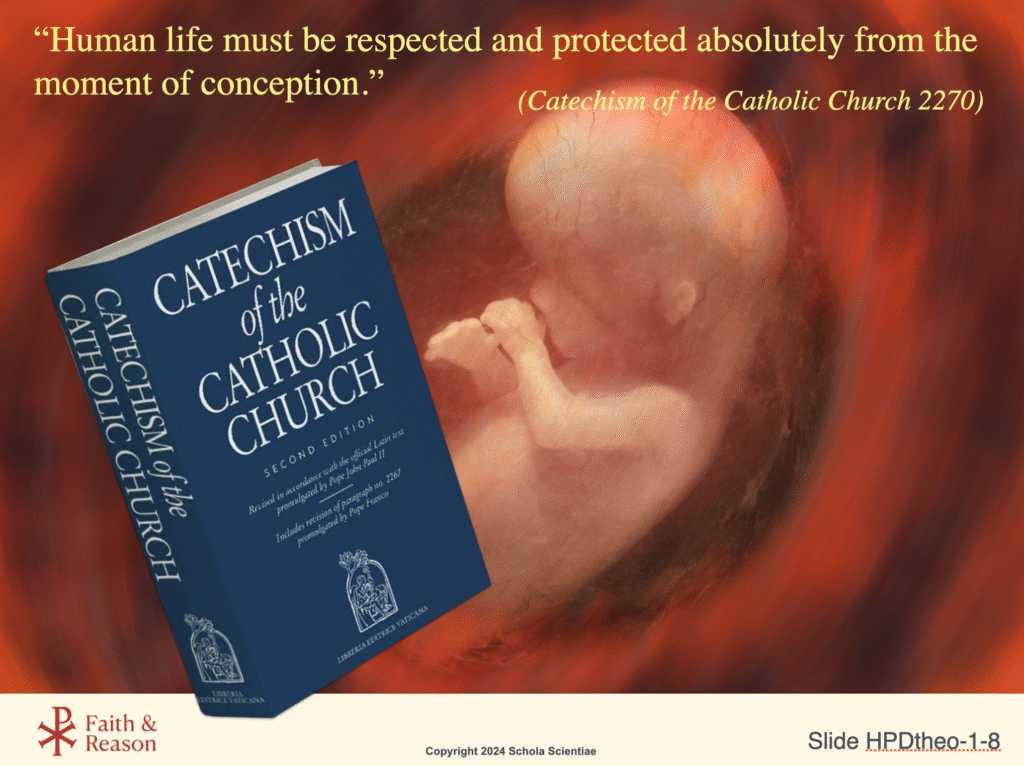
Ground the theological discussion in Church teaching. Make it clear that the Church affirms the sanctity of life from conception. Ask: ‘Why do you think the Church says life must be protected absolutely from conception?’
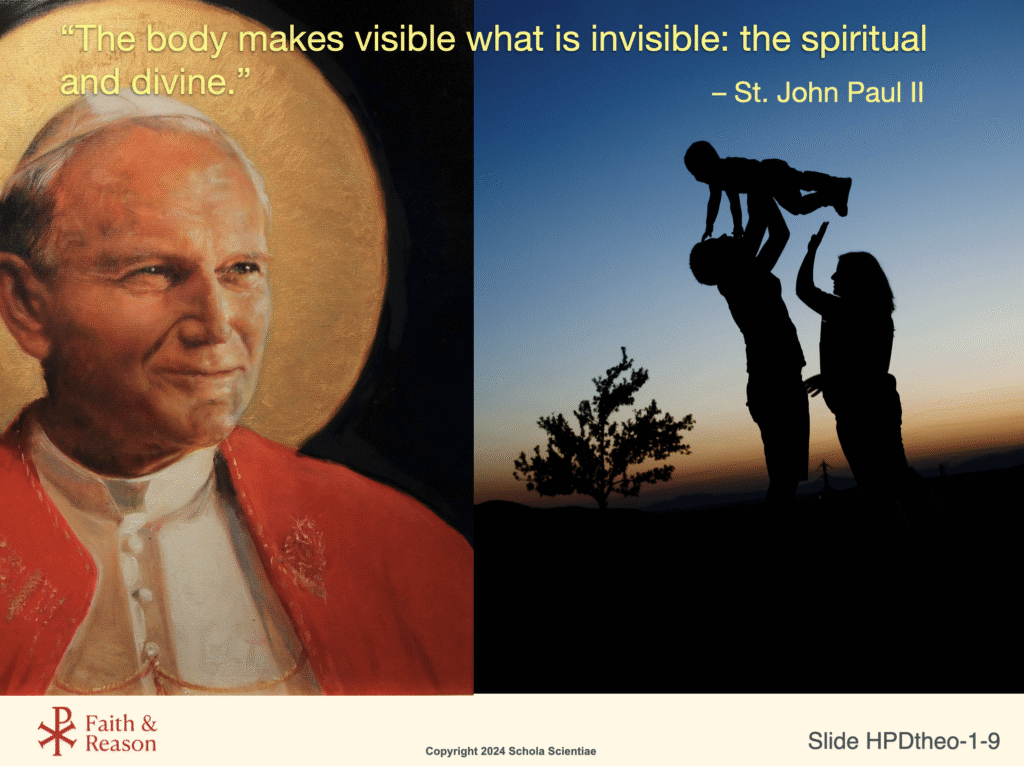
Explain how TOB teaches that the human body is not just biological—it’s theological. Invite reflection: ‘How does your body show who you are inside—your soul, your love, your dignity?’
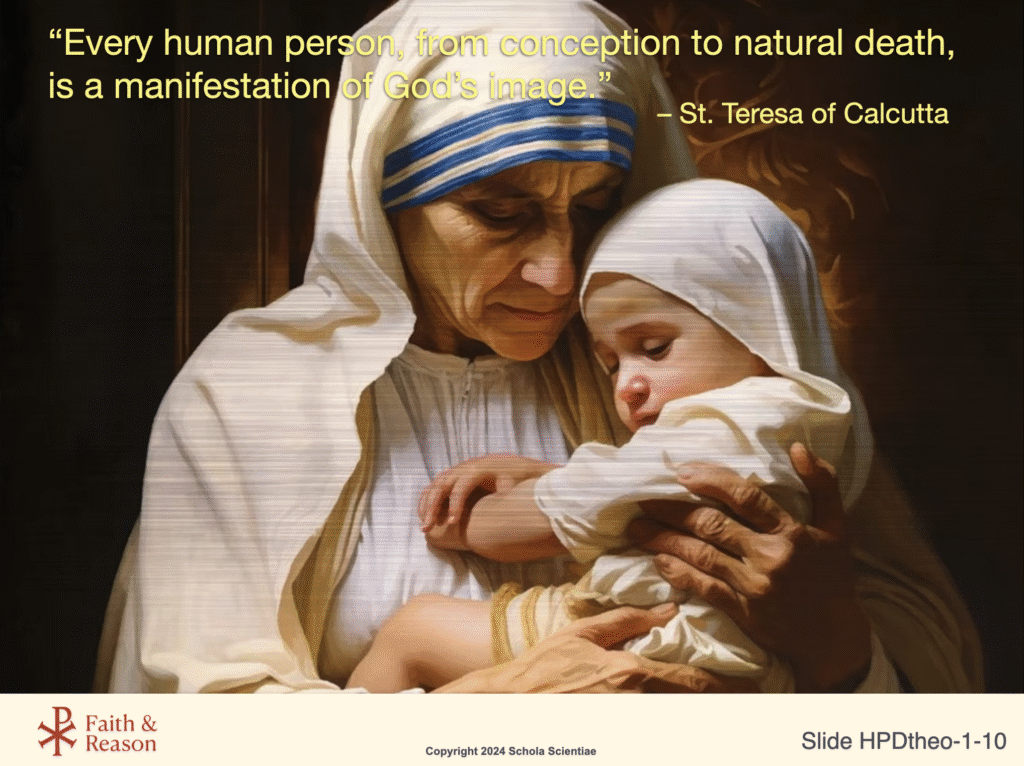
Quote from St. Teresa of Calcutta
Let the quote stand. Read it slowly. Ask students to write a short sentence about how this quote affects their view of unborn life or their own self-worth.
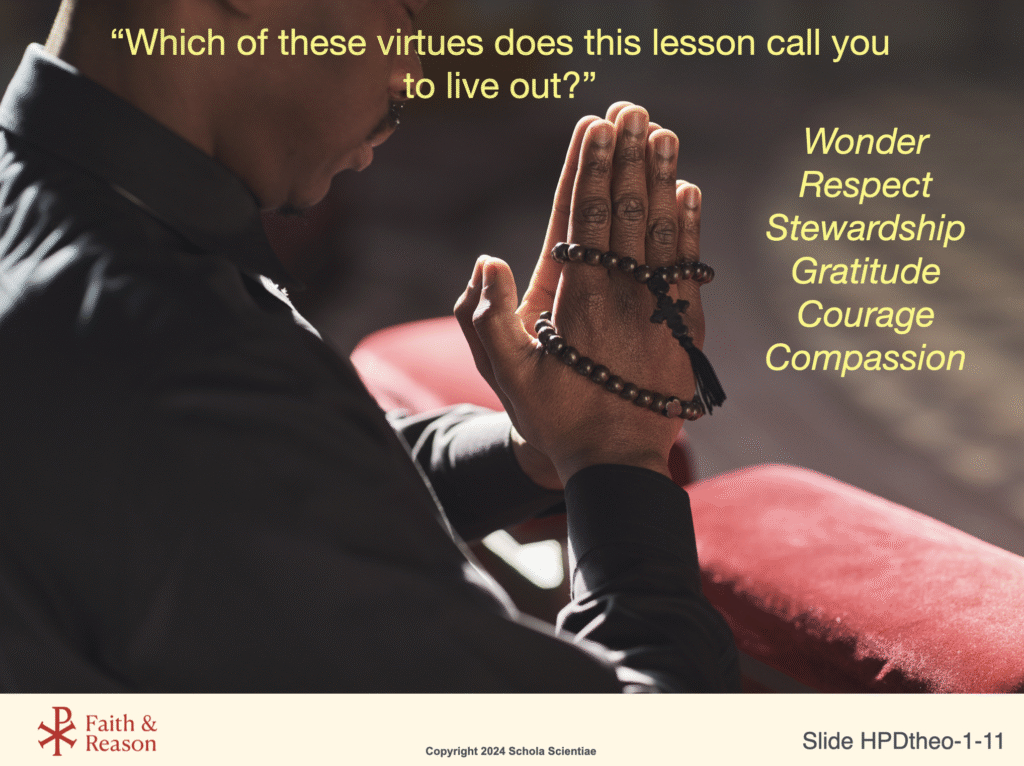
Read each virtue aloud. Invite students to choose two and write how understanding human development helps them live these out. This is a great point for small group sharing or journaling.
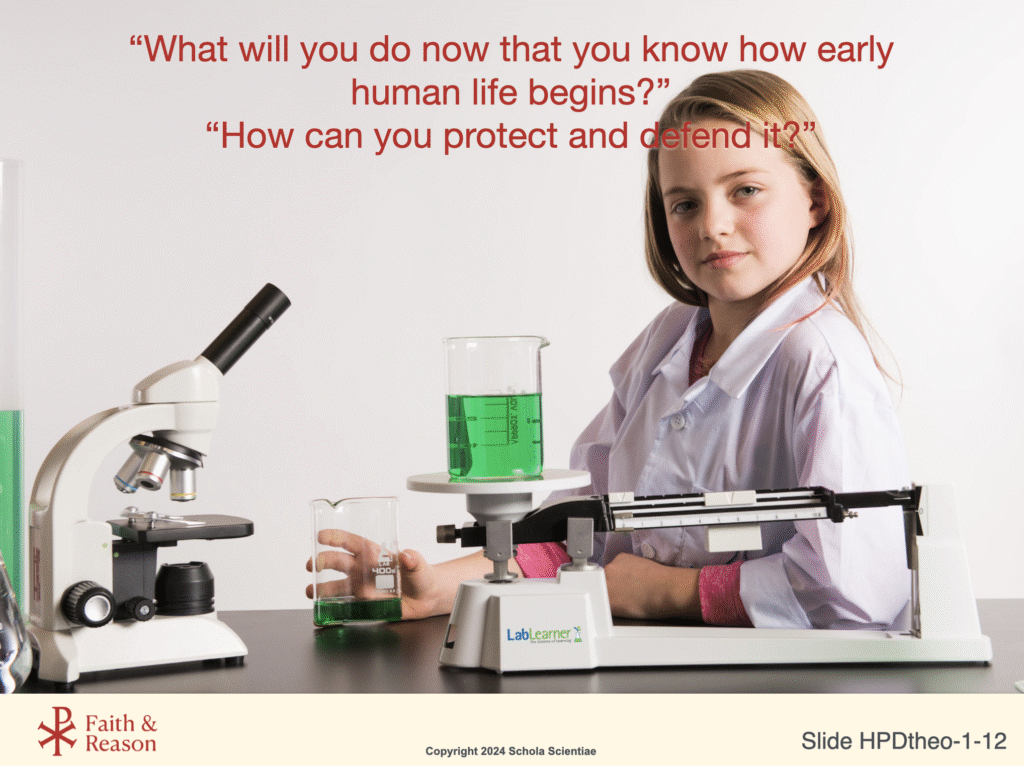
Encourage personal responsibility. Ask: ‘What will you do with what you’ve learned?’ Suggest that knowledge creates moral responsibility to protect and defend life in both words and actions.
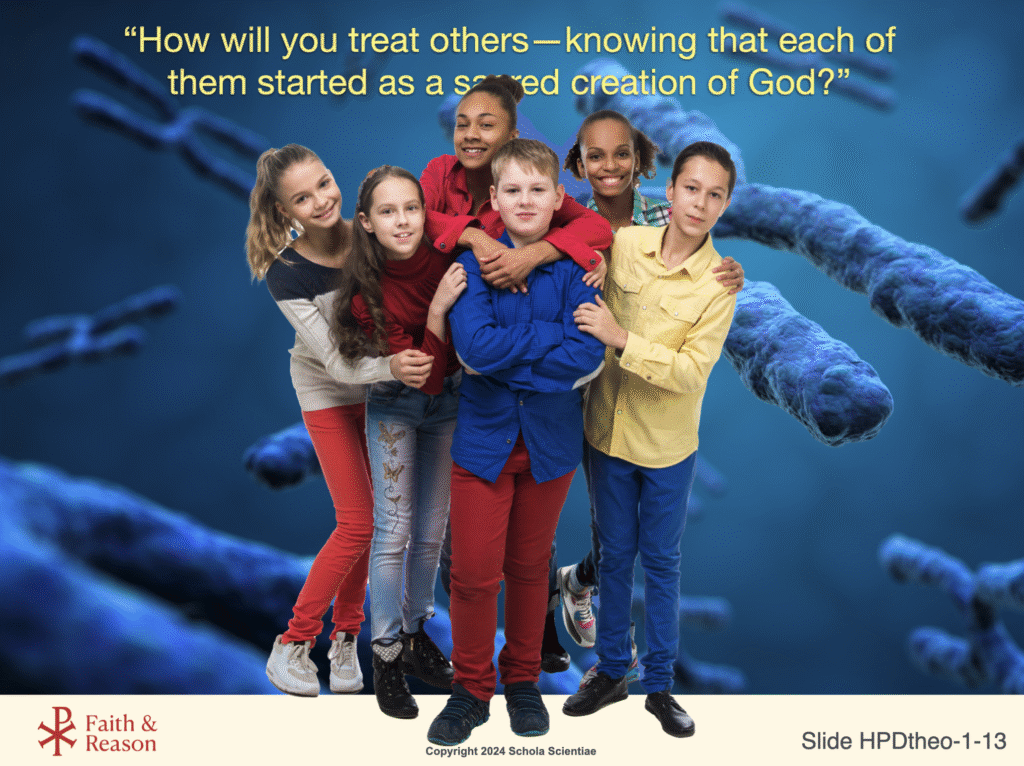
Social Reflection
Invite discussion: ‘How should we treat others if we believe each person is a sacred creation?’ Link this back to virtues like respect and compassion.
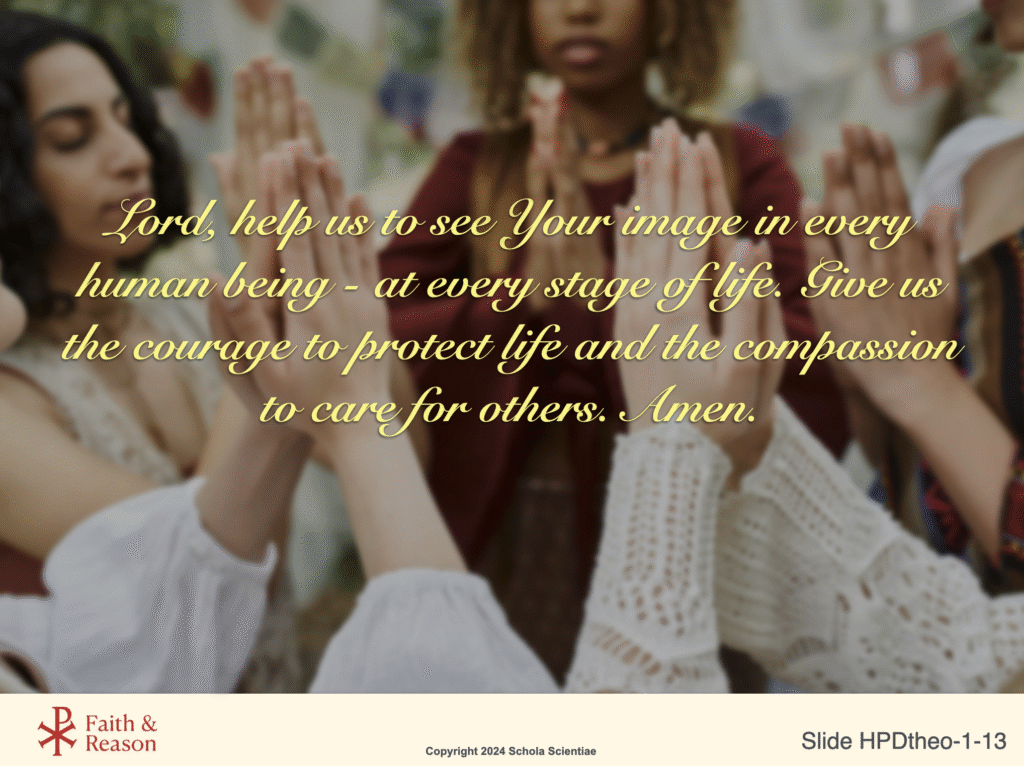
Closing Prayer
Pray together as a class. Optionally, invite students to offer their own prayer intentions for unborn children, parents, or scientists working in this field.
